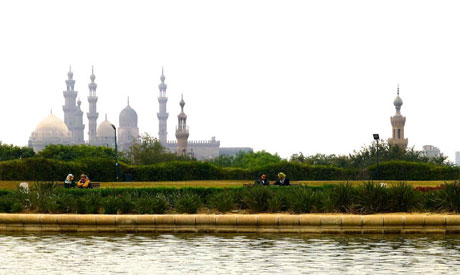
View of Rifai and Sultan Hassan mosques from Al-Azhar park in Cairo, Egypt (Photo: Hannah Porter)
In the heart of Cairo's Al-Qalaa district, the Rifai and Sultan Hassan mosques grace the landscape with their architectural beauty.
Sultan Hassan Mosque and Madrassa
The Rifai and Sultan Hassan mosques cut an awe-inspiring profile across the horizon of Islamic Cairo, yet these Mamluk-style structures are most impressive when viewed up close, which is exactly why the Administration for Archaeological Awareness in Gemaleya chose the site as last Sunday’s destination for their weekly heritage tour.
The organisation "aims to spread archaeological awareness and to educate the public on Egyptian civilisation through free lectures and field trips," according to their Facebook page. The tours are led by the extremely knowledgeable and animated Mohamed Ahmed Abdel-Latif, head of the Division of Islamic and Coptic Antiquities.

(Photo: Hannah Porter)
A group of over 60 Egyptians eager to learn more about their country’s storied history gathered in the breezy corridor between the mosques before the tour began. Those who had never entered the mosque of Sultan Hassan would soon learn that the interior is even more striking than the towering 650-year-old minarets.
It was difficult to comprehend the vast history behind the sites we visited that day, but we were lucky to be accompanied by Abdel-Latif, who would call for us to gather round in the centre of each building while he described the events and personalities that contributed to the buildings’ expansive narrative.
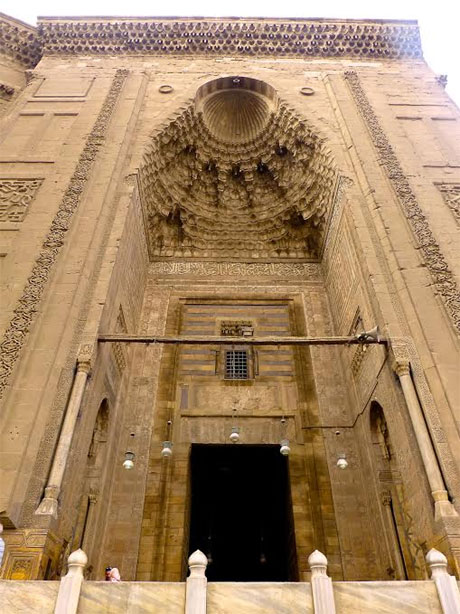
(Photo: Hannah Porter)
The construction of the Sultan Hassan Mosque and Madrassa was completed in 1359 and the building functioned as a centre of prayer and study. At the time of its construction, the mosque was unprecedented in terms of size.
The audacious building plan had its perils. According to Abdel-Latif, the third out of four minarets that were planned for the mosque collapsed during construction, tragically taking 300 lives. The dome itself collapsed as well, and in the late 1300s the roof of the massive structure was used by dissidents to launch attacks on the nearby Citadel.
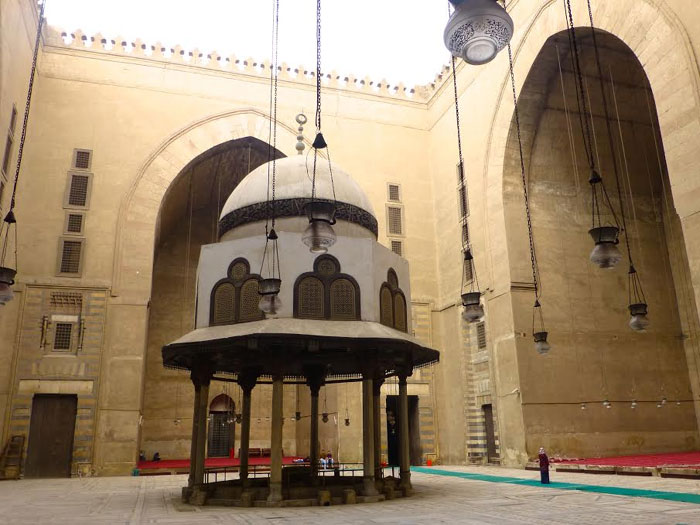
(Photo: Hannah Porter)
The mosque’s interior features a wide sahn, or courtyard, with four iwans skillfully constructed within each of the four walls. The iwans represent the four main schools of Sunni Islamic jurisprudence—Hanafi, Hanbali, Malaki, and Shafii.

(Photo: Hannah Porter)
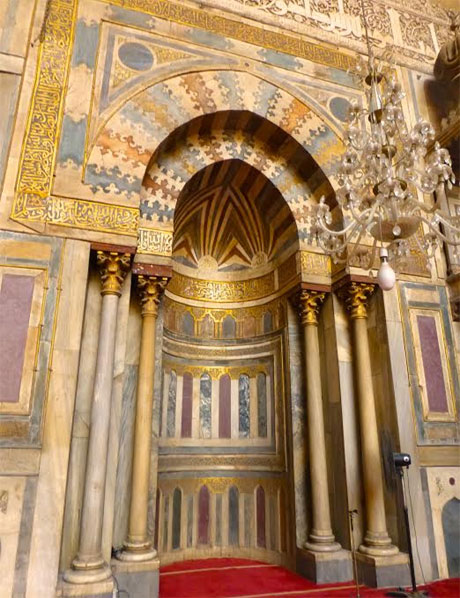
(Photo: Hannah Porter)
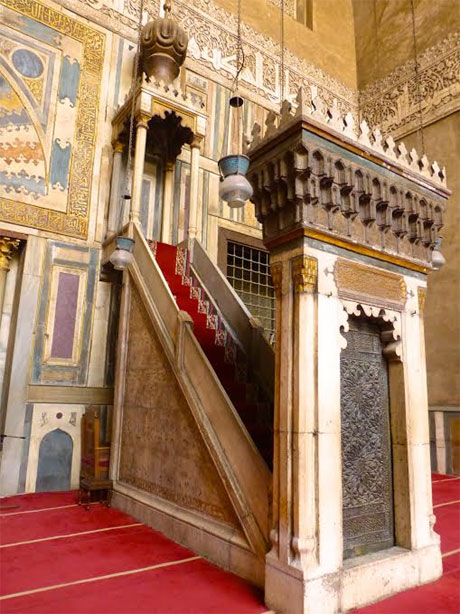
(Photo: Hannah Porter)
Rifai Mosque
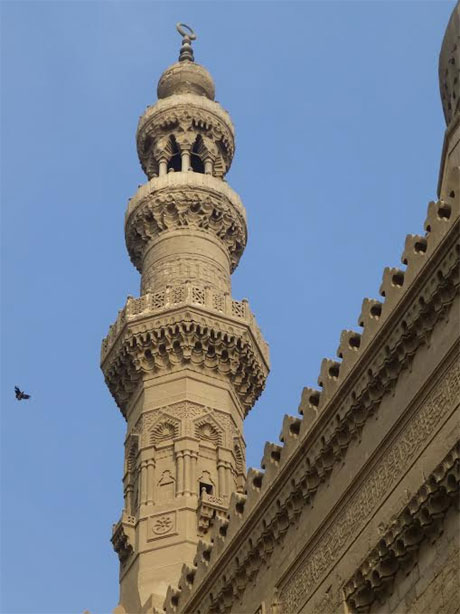
(Photo: Hannah Porter)
To the architecturally untrained eye, it is surprising to learn that the Rifai Mosque was built in 1912, around 550 years after the construction of the neighbouring Sultan Hassan Mosque. The details and grandeur of the Rifai Mosque are stunning, compelling visitors to inspect every pillar and door.
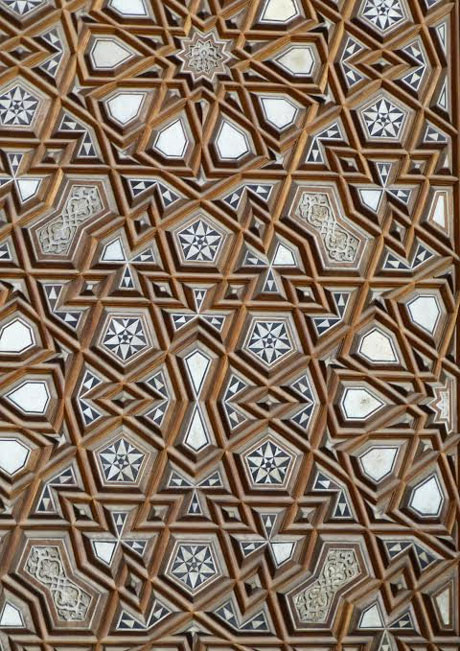
(Photo: Hannah Porter)
One of the most interesting design features pointed out by Abdel-Latif was the Christian iconography that plays an important role in the decoration of the Rifai Mosque. In fact, a number of crucifixes can be seen on the exterior walls of the mosque.
Although the Rifai Mosque does not contain the grave of the prominent Sufi Sheikh Rifai, whose remains are interred in Iraq, the mosque does include the graves of many notable historical figures such as King Fouad, who ruled Egypt from 1922 until 1936, and his son King Farouk, who was overthrown in the Egyptian revolution of 1952.
The Rifai Mosque is also the final resting place of the last Shah of Iran, Mohammad Reza Pahlavi, who was married to King Farouk's sister, Princess Fawzia. The Shah died in Cairo in 1980.
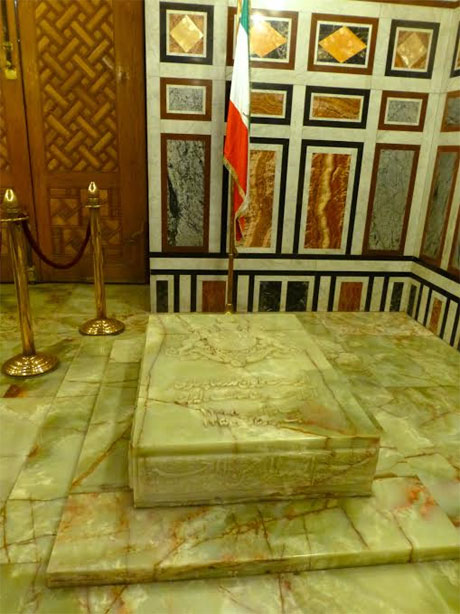
(Photo: Hannah Porter)
Mawlawi Complex
A few blocks from the two mosques is the Sufi Mawlawi complex, between Manah Al-Waqf and Essiyufiah streets. The complex contains the Sufi Theatre, or the Samaa Khana, the 14th century madrassa and mausoleum of Emir Sunqur Sadi, and Sheikh Hassan Sadaqa's Mausoleum.

(Photo: Hannah Porter)
The Sufi order of the Mawlawi, commonly referred to as whirling dervishes, used the Samaa Khana for their rituals of listening to music and chanting as a way of being closer to God. The wooden interior of the Khana is simple yet elegant and stylistically very different from other historical buildings in Cairo, such as the ornate mosques and museums that are frequented by tourists.

(Photo: Hannah Porter)
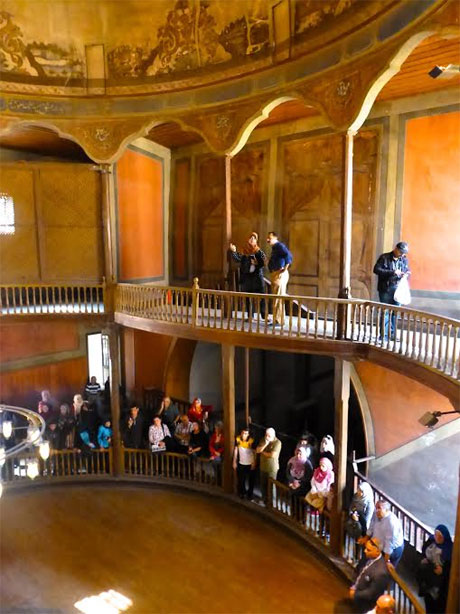
(Photo: Hannah Porter)
According to Giuseppe Fanfoni’s 1999 study The Foundation and Organization of the Cairo Mawlawiyya, the construction of the Samaa Khana was completed between the 1850s and 1860s. The inscription on the hall’s interior dome is dated from 1857, which likely indicates the final phase of construction.

(Photo: Hannah Porter)
The Cairo Mawlawi group was dissolved in 1945, 20 years after their dissolution in Turkey by Ataturk, and the complex was abandoned.
Short link: